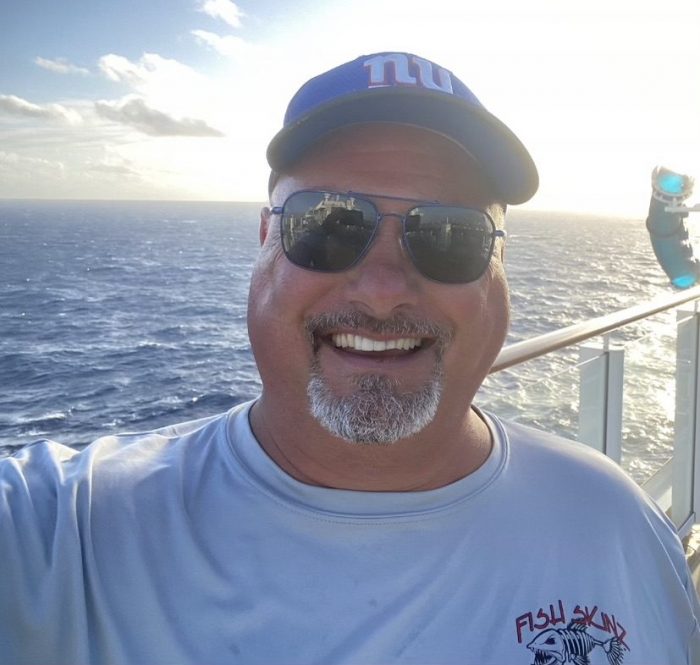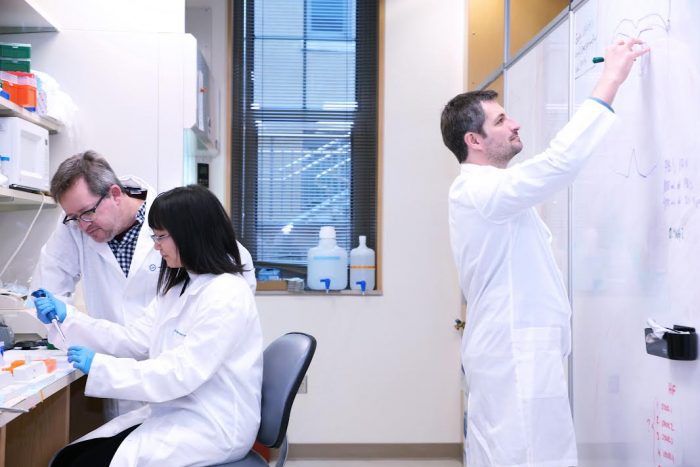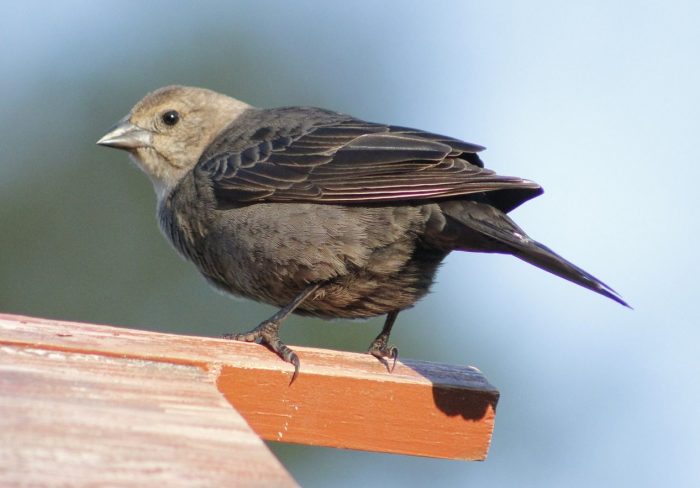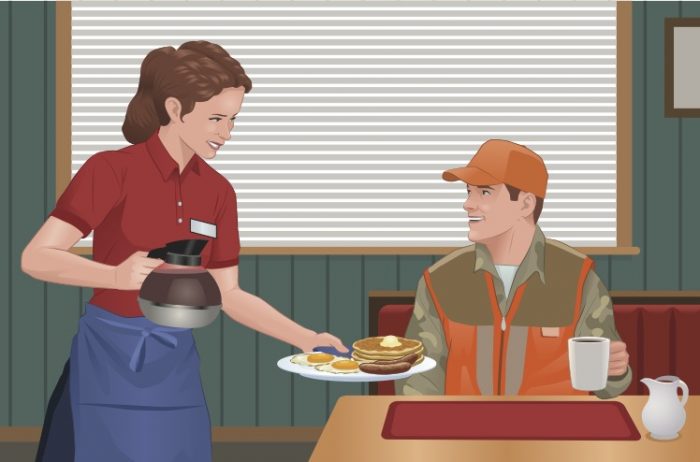Theodore Wawryk, a resident of Commack who performs maintenance work at the Bronx Gardens nursing home, had six stents placed in his heart in 2005.
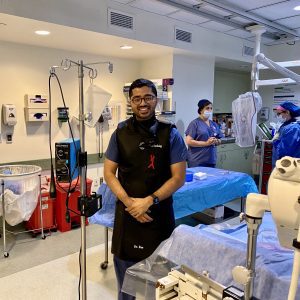
This past February, Wawryk, 52, had a buildup of calcium behind some stents at their edges, which could lead to restenosis, or a narrowing of the arteries again.
The patient came to Huntington Hospital, where his cardiologist, Dr. Raj Patcha, director of the Cardiac Catheterization Laboratory, couldn’t initially get through the blockage.
Patcha reached out to Dr. Gaurav Rao, director of Interventional Cardiology at Huntington Hospital, to see if Wawryk might be a candidate to become the first Huntington Hospital patient to receive shockwave intravascular lithotripsy, also known as IVL.
Rao had used the shockwave treatment, which uses pressure waves to create fractures in the calcium, for over a year at other hospitals and was prepared to introduce the procedure at Huntington Hospital.
Other options for breaking through the calcium, such as orbital or rotational atherectomies, which act more like miniature jackhammers breaking up the calcium in the arteries, are off label when a stent is nearby because it can shave off the metal in the stent, leading to other complications, Rao said.
Additionally, placing another stent in the area without modifying the calcium leads to stent failure.
Rao and Patcha performed the procedure in early February.
“This is a much safer” approach, Rao said. “It’s revolutionary in the way we deliver classic cardiac care.”
Shockwave IVL enables the placement of stents by creating fractures in the calcium that allow doctors to put in functional and durable stents, Rao explained.
Other area hospitals have used shockwave IVL for circulatory issues as well. Stony Brook Hospital, for example, uses shockwaves for peripheral arteries. Huntington Hospital also uses shockwaves to treat peripheral vascular disease.
While every surgical procedure includes risks, Rao cited studies that indicate that the possibility of a dissection, or a tear in the wall of the aorta, for heart-focused IVL is 0.3% for shockwave IVL, which is substantially lower than the 3.4% rate for orbital atherectomy and 3% for rotational atherectomy.
Rao said about 70% of patients who are coming in for stents are eligible for IVL, while the remainder are still candidates for atherectomy.
Extremely long lesions or lesions where the entry point is small so that doctors can’t deliver an IVL balloon make atherectomies, with their front cutting abilities, the preferred approach, he said.
So far at Huntington Hospital, the growing number of patients eligible for shockwave IVL have chosen to have this approach.
“No one has shied away from shockwave therapy,” Rao said.
Patient experience
As for the patient experience, Wawryk recalled how the operation, felt “a little weird.”
Wawryk described how the doctors told him he’d feel a “little zap” inside his body.
Indeed, Rao said the procedure uses an electrical pulse that can cause the heart rate, particularly for someone with a resting pulse below 60 per minute, to accelerate for about 10 seconds.
Intravenous lithotripsy, which uses a low energy pressure wave of about 8 to 10 nanojoules and involves inserting a tube through the arm or leg, is generally “well-tolerated” Rao said. Many patients don’t feel the effect of the procedure.
Even with the slight shockwave, Wawryk said he would recommend the procedure to other patients considering it.
Wawryk, whose father died of a heart attack at the age of 46, is grateful for the cardiac care he received. He appreciates the time he gets to spend with his wife Nydia and his 19-year-old son Michael.
The Commack resident spent a day at the hospital, as the procedure started at 7 a.m. and he was heading home by 7 p.m. that night. He said he felt like the staff treated him as if he were at a “five-star resort.”
Rao is pleased to offer this interventional cardiac approach at Huntington Hospital, which makes it possible for residents nearby to receive the treatment and head home, without a longer ride back from a hospital further away.

